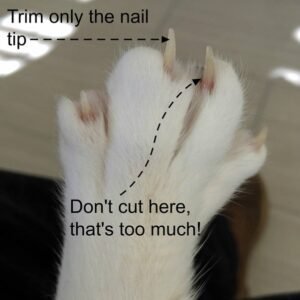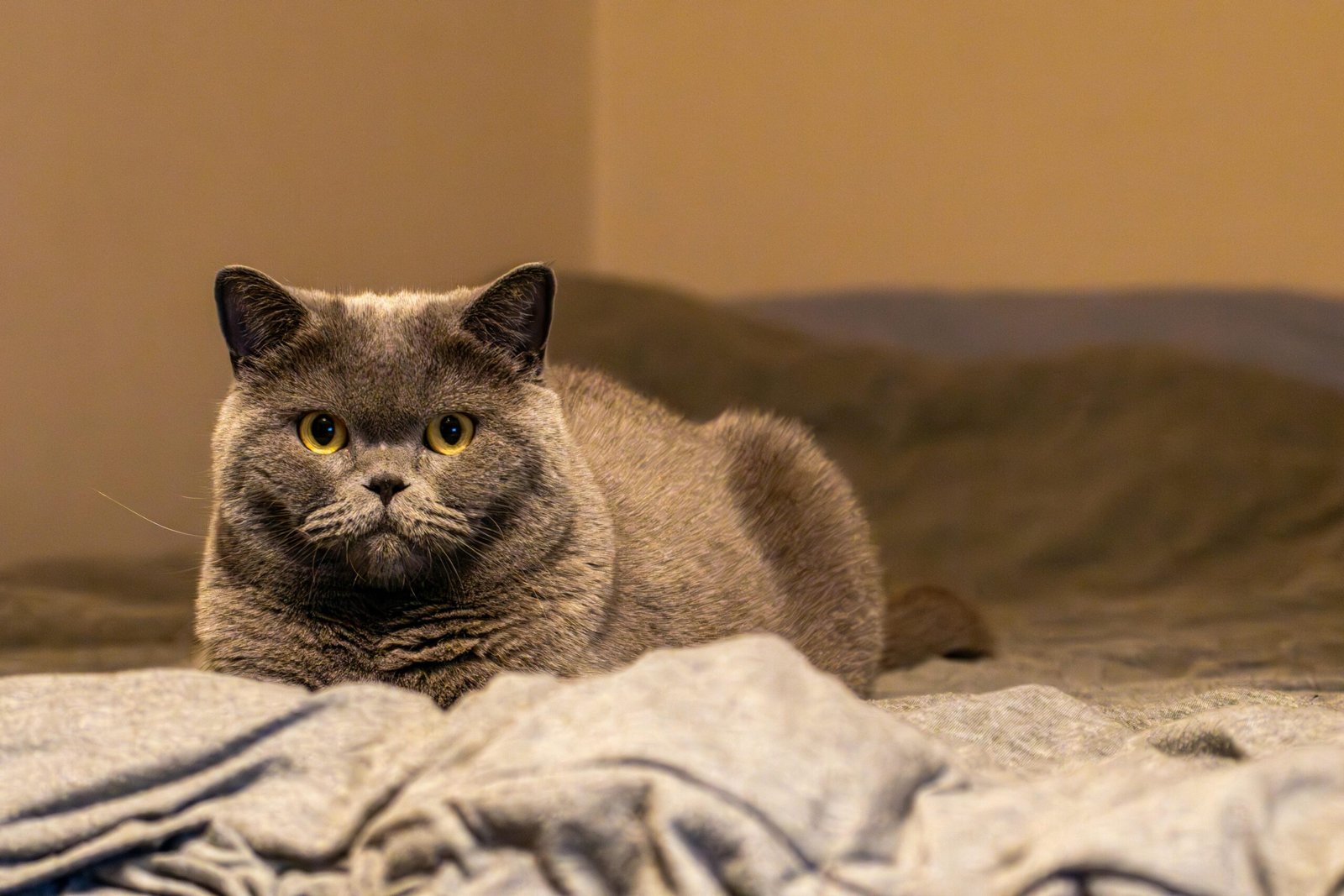Understanding Cat Behavior: Do They Know When They Misbehave? Last Updated on 22 Jan 2025, Care Kitties As cat owners we wonder …
Cat Grooming Tips: Essential Guide for a Happy Pet
Cat grooming is important because cats are very clean creatures. They take care of their own cleanliness. If you have a cat, you will know that most cats do lots of licking throughout the day. If your cats have ever licked you, you will know that a cat’s tongue is a bit sharp. Using this sharp tongue, they make themselves dirt-free. But still, grooming is very important for your cat’s health and making it cleaner. Short-haired cats do not need grooming sessions often. Once a week is good for them, but this can increase depending on how clean your cat is. But long-haired coats usually need 3–4 grooming sessions per week. Grooming helps you and your cat bond with each other, makes the cat healthier, improves circulation, reduces shedding and hairballs, and has many different benefits.
Before you start grooming your cat, you need to understand these few things first:
Start Early with Cat Grooming:
You can compare grooming with some kind of training or exercising. Most of the kids do not want to exercise or train. They want to be free and play all the time. The same with the cats too. They do not want to be restrained. They want to be free all the time. That is why it is important to make the grooming session a habit for the cats. In their early years, cats are most receptive. So starting grooming early will make grooming a part of their life, and they will be willing to do so, and your hard work will become much less.
Provide Treats During Cat Grooming:
Cats work through positive reinforcement. If you have trained your cat or have read about how to properly train your cat, then you know how important it is to provide treats to train the cats. In grooming, this is also the case. After each grooming session, make sure to treat them so that whenever we start grooming them, they do not restrain much and cooperate with us.
Make them feel safe and comfortable.
As mentioned before, cats do not like grooming. So they try to resist it. They get scared when you try to groom them. So before you start the grooming session, start their grooming session. Make sure they are not scared and are feeling relaxed.
Look for skin diseases:
Before you start grooming, look for any potential skin diseases in your cat’s skin. Also, look for any fleas or ticks that can be found on a cat’s fur. To find the flea, part the fur to assess the skin condition, especially on the neck, at the root of the tail, the underbelly, and the inner thighs. Check for discrete, dark objects crawling on the fur (adult fleas) or black granules (flea droppings). Comb through the cat’s fur using a flea comb with its fine teeth. Concentration on places where a flea can be found, observed or become a subject of awareness. To check for fleas or flea dirt after the combing, you could examine the comb every few strokes of the comb. On the other hand, ticks are more likely to attach, such as around the ears and neck, between the toes, under the armpits, and near the groin. To find the ticks, rub your hands on your cat’s body occasionally to try and identify whether there are any lumps that are out of the norm. Most ticks are first sensed before they are visually perceived. If you see any bumps, separate the fur to get a closer look at them. They have a small mouth, which they use to suck the blood, and it can be as small as a pinhead or as big as a small pea. If you have a suspicion that your cat has any skin disease, flea or ticks, then you should immediately take your cat to the vet. And most of the skin diseases are contagious, so it is quite possible that if you have other cats, they also have the same problem.
Short and quick sessions:
Cats get bored easily. So when you do your grooming sessions, make sure they are short and quick. Do not force the cat to do so. If they feel like doing it, then continue; otherwise, stop. Forcing them every time (apart from baths) can make them hate the grooming session, and next time it will be tougher for you to groom them.
Now we will look at some of the most important parts of a cat’s grooming:
Brushing: A Key Step in Effective Cat Grooming:
Brushing makes the cat’s coat dirt- and tangle-free, removes dead hair, and makes it shiny. Also, brushing improves blood circulation, prevents infections, distributes natural oils, and has many other benefits. Based on short and long-haired cats, we need to brush them differently:
- For short-haired cats: Begin with a metal comb to make sure to remove dirt and loose hair. You need to brush them from head to tail, and they need to be brushed in the direction their hair grows. This way, the dirt and loose hair will be removed. Finally, a rubber brush can be used to remove any dead fur from their coat.
- For long-haired cats: One of the main problems for long-haired cats is that their hair easily gets tangled. And often, this creates a lot of problems while brushing, and lots of dirt cannot be cleared by the cats due to the tangles. So brushing them is a bit different. To brush a long-haired cat effectively, begin by using a wide-toothed comb to undo any tangles in the coat, then apply the slicker brush to remove any loose fur and finer tangles, ending with the fine-toothed comb to smooth the fur. Make sure to begin the brushing from the belly and chest and then upward. Be very careful, especially around sensitive areas such as the tummy and axillary region, and make use of a mat splitter on extra-tough mats. Several groomings or brushings several times a week, help to avoid problems such as matting and keep the coat in good condition. Give your cat some incentives to avoid making the experience a terrible one for them, and observe skin problems during the process.
Bathing:
Cats are very clean, as mentioned multiple times in this article. So they do not need regular baths. But sometimes they get very dirty, and without bathing, no other option is there. So at that time, bathing is important. Also, twice a year, bathing can be done even if the cat is not very dirty. Cats do not like water. So bathing your cat can turn into a wrestling fight between you two. Cats are sensitive to water, making bathing a struggle. To avoid discomfort, engage them in energetic activities before bathing, clip or trim their nails, and use cotton in their ears to prevent water from entering. Place a rubber mat or other barrier to prevent slippage. Use a cat shampoo that suits their skin better than human shampoo. Mix one part cat shampoo with five parts lukewarm water, then thoroughly wet your cat from head to tail. Gently massage the cat with the solution, and give extra attention to sensitive areas like the eyes, ears, and nose so that water or solution does not get into those parts. Wait for a few minutes after using the shampoo and brushing, along with bathing, for better circulation. Rinse off the shampoo and dry the cat in a warm place, avoiding leaving water in the cat’s body. If your cat is good enough, use a hair dryer for proper drying.
Nail trimming:
Nails are very important for cats. They use them to climb, fight with other cats, defend them, groom themselves, scratch and do many other things. Indoor cats’ nails need to be trimmed after a few weeks. But if your cat spends most of the time outside, then it is not a good idea to cut or trim its nails regularly. Because nails are a means for their survival, if you cut them, they will not be able to defend themselves or climb in times of emergency. Cutting nails saves cats from breaking them or making them infected. Nail trimming is a crucial task for cats, and using a proper nail cutter is essential. Cats are generally scared of the sound of nail clipping, so it’s important to train them with the sound before starting. Choose a quiet environment, wrap the cat in a towel, press the paw, and avoid cutting the “quick” part of the nails (see the image below for better understanding).

Be slow and extra sensitive, cutting two or three nails in one sitting and resting in another. Treat the cat with their favorite food after each session to reduce resistance. If the cat still resists, seek help from a professional caregiver or vet.
Ear checkups:
In your grooming sessions, checking cat ears is also very important. This is often overlooked. But this needs to be handled like any other body part. Regular inspection and gentle cleaning are essential for preventing ear issues in cats. From the first birthday, clean the ear once a week, checking for signs of infection or infestation. Gently clean the outside of the ear using a cotton wool or soft cloth, avoiding cotton swabs. Monitor for cues of ear issues, such as shaking or scratching. Preventative care includes keeping the cat’s environment clean and maintaining ear mite and infection treatments. If you find anything out of the ordinary, you must take your cat to the vet as soon as possible.
Doing such things can make your cat healthier and love you longer. It can also help you cut costs for any future diseases or problems. As the cat is regularly groomed, it is less likely to get diseases. So happy cat parenting!
Related Articles
Harness Training A Cat: An Eight-Step Guide Last Updated on 15 July 2024, Care Kitties Why harness training a cat is important …
Best Places to Bond With Your Cat Last Updated on 09 July 2024, Care Kitties It is necessary to take a perfect …
Top 11 Qualities that make you the Best Cat Parent Last Updated on 26 May 2024, Care Kitties Cats are adorable and …
Litter Training 101: Essentials for New and Experienced Cat Parents Last Updated on 20 May 2024, Care Kitties From birth, cats and …
Adopt, Don’t Shop: The Advantages of Pet Adoption Last Updated on 19 May 2024, Care Kitties We all want to have a …







